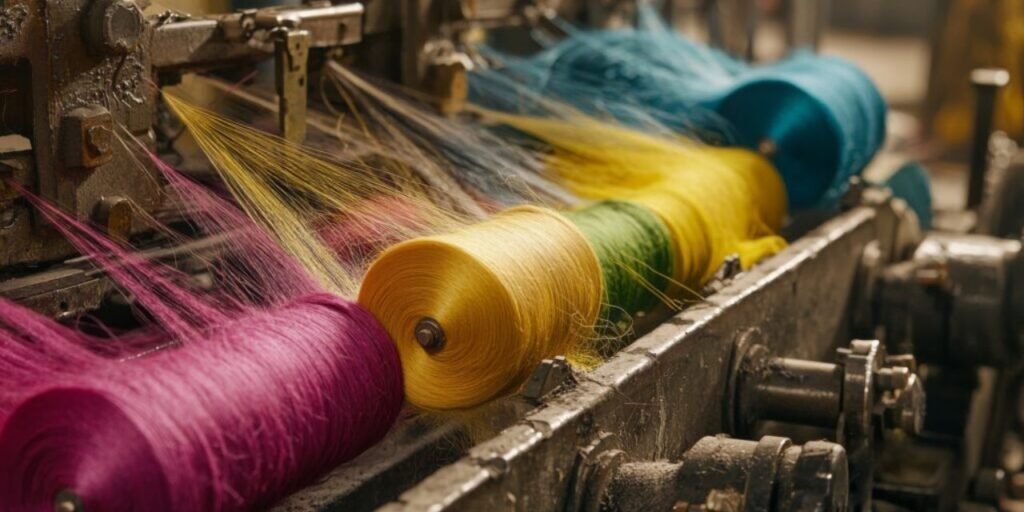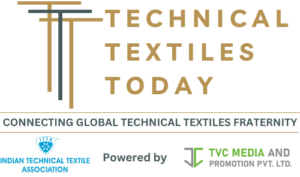Reducing, reusing, and recycling is a profitable path to success.

The United Nations Environment Programme estimates that by 2025, cities throughout the world would generate 2.2 billion tonnes of rubbish annually. The textile industry must minimise, reuse, and recycle waste because of the negative effects it has on the economy, the environment, and human health. In a spinning mill, for instance, between 15 and 25 percent of the textile waste from the blending room to winding is recyclable and reusable. Waste costs money in and of itself, and it adds to the cost of production. In the case of textile mills where natural fibers and their blends form the bulk of waste, additional cost is incurred for disposing of non-biodegradable materials and functional chemicals.
Additional difficulties arise in the process of getting rid of synthetic waste, both during manufacturing and after usage. Chemical formulations and synthetic materials are the foundation of the technical textile industry. This feature of the industry raises awareness of its carbon footprint and the costs associated with reducing and eliminating waste. While these are burdens for the industry, it also provides opportunities for the development of innovative technologies for reusing the post-industrial and post-consumer wastes and recycling. Processing waste from industrial and technical textiles industries can create new sectors, enabling new products and creating new jobs.
Unprocessed materials
The 3Rs—reduce, reuse, and recycle—are crucial instruments for fostering circularity. The cost of the raw materials used has an effect on the manufacturing sector’s profitability and can affect the finished product’s pricing by up to 70%. As a result, in production, the quality of the raw materials must come first. The textile industry uses natural and synthetic materials, and hence sorting them for proper reuse and disposal is the first step towards circularity.
Purchasing cotton free of contamination is the first step in cutting costs since spinning mills that use natural fibres are more likely to have contaminated raw materials. The textile industry and cotton growers are working to reduce the amount of plastic in cotton bales. India is a leading producer of cotton and a leading exporter of textile goods. The Indian spinning sector is looking at importing cotton from a leading cotton exporter like the U.S. due to its cleanliness, provided the price is competitive with domestic cotton.
Recovering useable fibres from waste increases the spinning process’s profit. Textile waste from mills may be recovered and repurposed. About 40% of the waste from blowroom and carding, as well as 25% from the flat during the carding process, may be recovered and used as useable fibre, said Kanthimathinathan Aramvalarthanathan, a textile expert located in Coimbatore, India. Comber noil is frequently utilised as recycled fibre in open-ended yarn spinning, one of the several wastes recovered, and these yarns are utilised in household textiles like bed linens.
According to Velmurugan Shanmugam, general manager of Jayalakshmi Textiles, a company with 72,000 ring spindles based in Aruppukkottai, “Saw ginned cotton, as is the case with the United States’ cotton industry, has trash less than 1.5 percent, while Indian cotton may have trash of about 3-4 percent, and therefore additional cleaning points are needed.”
Financial benefits
According to Velmurugan Shanmugam, high-quality waste materials, including comber noils and fibres from flat carding process strips, may be easily utilised to spin coarse yarns that are used to make house textiles. Numerous textile goods for the home contain post-industrial waste and repurposed materials. Crucially, the domestic textile industry offers textile exporters like Bangladesh and India significant prospects for sale to Europe and the United States.
Product realisation and productivity must be the textile industry’s top priorities. According to Velmurugan Shanmugam, “our cotton spinning mill with an average count of 70s Ne can increase its profit by 10 million Indian Rupees with an increase of 1 percent in yarn realisation.” The aforementioned data highlight how crucial waste reduction, productivity growth, and product realisation are.
As previously said, unnecessary materials are expensive when used in the production of textiles. Foreign materials that may or may not be reusable must be removed during the production of textiles made from natural fibres. Coimbatore-based Nestling technologies India Pvt. Ltd. is developing vision-based technologies to segregate plastic and other trash from cotton right from ginning to textile manufacturing.
According to Chandrasekaran Somasundaram, managing director of Nestling Technologies, “trash that is not discovered in cotton bales sooner translates into several meters in yarns and fabrics costing a fortune for the industry.” The textile industry’s sustainability may be improved by prioritising waste reduction and rubbish clearance.
Extra benefits
Waste reduction eases the strain on the environment and the issue of landfills. Reusing useful garbage not only reduces waste but also increases economic efficiency. Value-added textiles can be made from textile waste from traditional textile mills. The sweeping waste from textile mills may be turned into bonded mats that can be used as kitchen mats, oil absorbent mats, and gloves to create ecologically friendly technical textile goods.
Jayalakshmi Textiles has created recyclable materials that may be used repeatedly by using cotton waste and a natural binder. In order to safeguard human fauna and flora, this is an excellent example of how to handle complicated environmental issues like oil spills and the disposal of wipes and coveralls that are contaminated with harmful chemicals and oil.
Cotton stalks may now be turned into rigid boards thanks to innovative work by the Central Institute of Research on Cotton Technology (CIRCOT), located in Mumbai, India. In certain nations, burning stalks or tilling them into the ground is commonplace. The technology developed at CIRCOT prevents environmental problems when burning is practiced, as it contributes to air pollution.
Recycling of technical textiles
The advanced textiles sector is synthetic fiber-based, and hence the cost of recycling and the environmental burden is higher than the natural fiber-based industry. Among the different sub-segments of the technical textiles sector, the defense textiles industry occupies a prominent place, and governments have to regularly spend on procuring antiballistics, flame-resistant materials, and various kinds of personal protective equipment (PPE).
This industry is only beginning to employ recycled materials. Quebec-based General Recycled is endeavoring to change this landscape by recycling flame-resistant meta- and para-aramids to develop products that can be used by oil and gas sectors and the energy industry.
Highlighting the opportunities in recycling and reusing advanced textiles, Dave Kasper, vice president of sales at General Recycled ltd. says, “Some companies do not see value in recycling.” General Recycled has its manufacturing facility in Val-des-Sources in Quebec and uses renewable hydroelectric power making the operation carbon neutral. General Recycled’s operating philosophy is “closed loop,” enabling major multinationals to reduce their carbon footprints.
The advanced textiles business has a lot of chances to embrace circularity, but it is lagging behind in the recycling and reusing race. COVID-19 has shown the need to evolve standards and develop standard operating policies (SOPs) to reuse PPEs. While it is not possible to totally replace synthetics in the world of advanced textiles, effective processes towards reducing, reusing and recycling need to be developed. Companies like Jayalakshmi Textiles and General Recycled are leading efforts to reduce and reuse waste to develop value-added products.
Dr. Seshadri Ramkumar is a professor in the Department of Environmental Toxicology and The Institute of Environmental and Human Health, Texas Tech University, and a regular contributor to Textile Technology Source.
